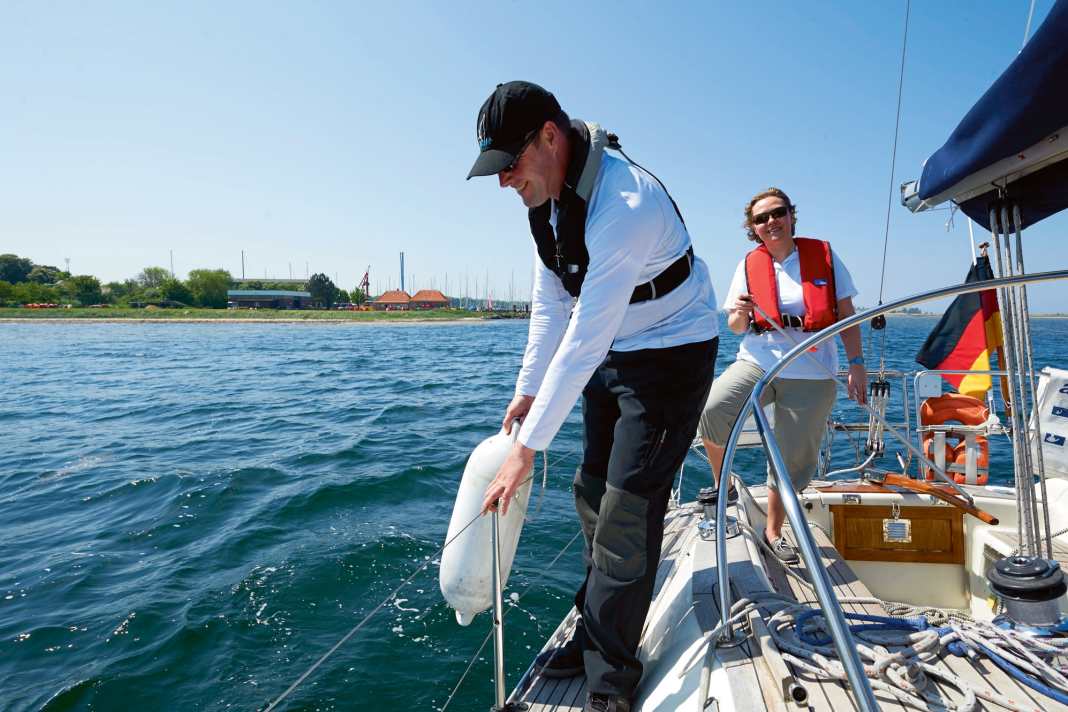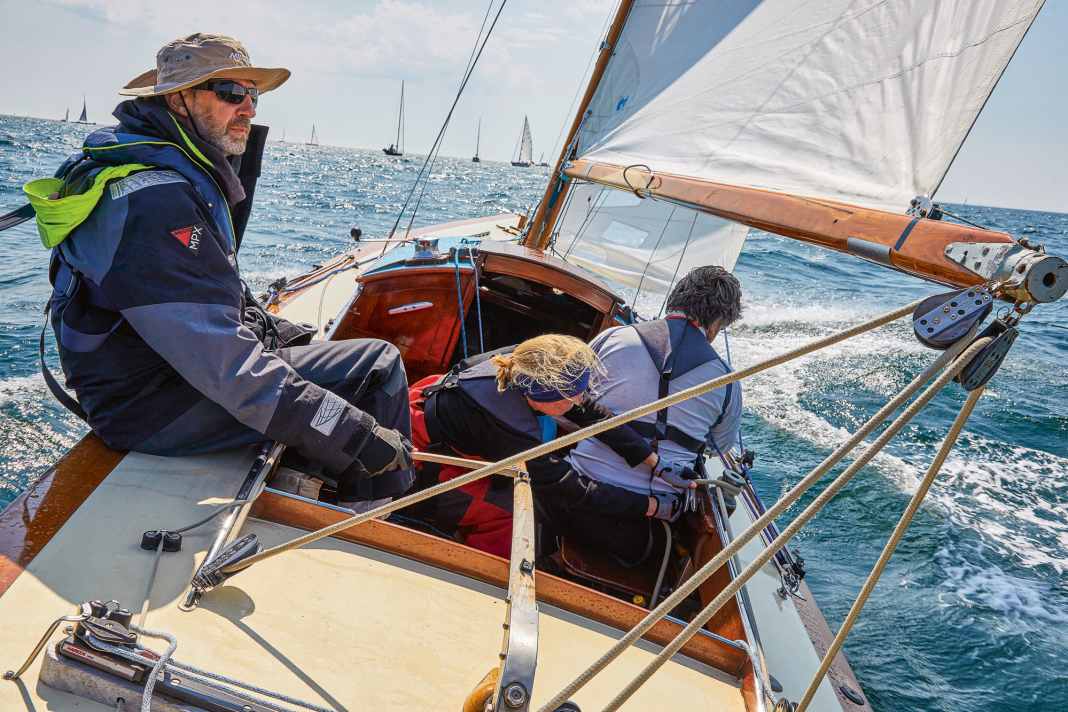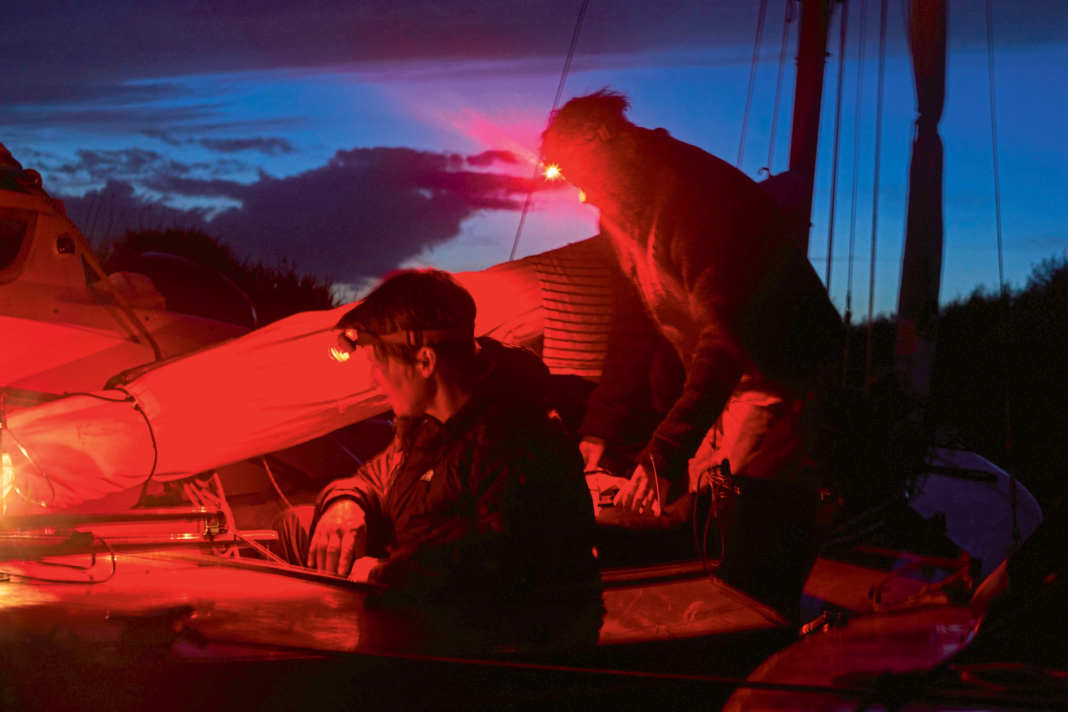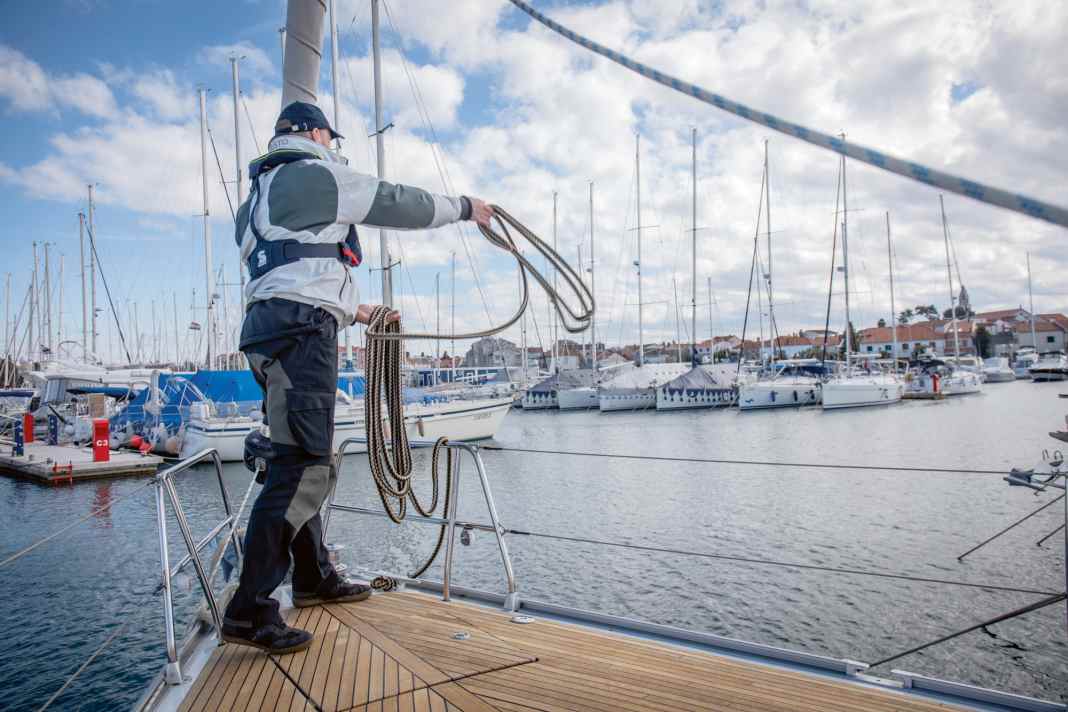Sailing for beginners: What beginners should learn before their first trip
Nils Leiterholt
· 24.04.2025






Hooray, it's done! You've passed your sailing licence and now it's time to get out on the water. But buying a boat straight away or chartering one for your next holiday trip is not the best idea in case of doubt. Most beginners lack practical sailing experience, especially if they have only obtained a sports boat licence.
Read also:
Without sufficient nautical miles in the wake, nobody should responsibly skipper a boat, at least not a larger cruising yacht. Even those who hold a sports coaster licence (SKS) are generally not yet ready to take on the role of skipper. The 300 nautical miles required as part of the SKS are a good start to gaining experience on board a sea-going yacht. But nothing more.
In the first part of our series, we showed you how to get into sailing in general. The second part was dedicated to training in sailing schools and clubs and explained which boating licences are useful or even mandatory for whom and for what purpose.
Since all theory is grey, we will now show you which practical skills you should acquire bit by bit as a sailor.
Welcome on board!






What characterises a good co-sailor is not so easy to answer. Every skipper places different demands on his crew. One offers his guests a complete feel-good programme. He not only does the sailing work himself, but also provides sufficient provisions, stands in the galley three times a day and acts as a tour guide in the harbour. Other skippers, on the other hand, require active co-operation from every crew member. This can include a wide range of activities, from bakehouse duties to helping with setting the sails or mooring manoeuvres in the harbour to rowing. It's easy to guess which type of skipper beginners learn more under.
The fact that you want to try out as much as possible yourself should therefore be clearly communicated before the trip. Only if the skipper knows who he is dealing with and what expectations the crew has of him and the course of the trip can he respond accordingly. Incidentally, a good skipper will clarify these questions on his own initiative before setting off for the first time.
When the time comes, it is important to be curious and signal your willingness to cooperate. But under no circumstances should you act hastily. If, for example, you cast off before the skipper has explicitly told you to do so, you may not endear yourself to him. Ideally, a skipper should gradually introduce inexperienced beginners to the various tasks, forgive mistakes and provide them with advice and support.
A little knot theory




Square and figure-eight knots, sheet, weave and bowline: which knots you should master as a beginner.
Without a sailor's knot, no sail could be set on a ship. Or rather, it would probably not be long before the sail fell off unintentionally. Even in the harbour, bowlines and the like are indispensable for attaching mooring lines to bollards, rings and cleats. Otherwise, the boat will break loose at the next breeze and drift away.
Admittedly, it is anything but easy for sailing beginners to memorise how to tie the various knots and when to use which one. The motto here is: practice makes perfect. At the beginning of your sailing career, you can't tie enough knots. They shouldn't just come quickly and almost blindly to you on board. You also need to be able to untie them just as quickly if necessary.
On their first voyages, a good skipper will help the novice sailors on board with tying the fenders or tying the cleats. He will probably even check their knots without being asked, as the weal and woe of the ship and crew depends on them. The bowline for throwing over the stern post in the mooring box should be absolutely perfect. The same applies to the weaving line and half-hitch for attaching the fenders. And everyone should also be able to secure a halyard or mooring cleat. The figure-eight knot, however, should be tied at the end of every sheet.
Seven things for sailors






Oilskins, lifejacket, sun cream and more: what should be on the packing list for the cruise?
It's true, sailors need a lot of personal equipment. However, you don't have to pay a fortune for a windproof and waterproof jacket, non-slip deck shoes, sunglasses that protect against UV rays or a splash-proof smartphone case. In fact, low-cost manufacturers and retailers have also discovered the water sports market in recent years. Decathlon, for example, sells a good sailing jacket for just over 100 euros. Inexpensive own brands from boating mail order companies have also performed satisfactorily in tests.
However, there is one point where compromises are out of the question: safety! If you buy a lifejacket or a lifebelt, for example, you should go for a quality brand. A cheap pair of sea boots can get your feet wet in the worst case scenario, while your life depends on a lifejacket.
The hour of the tinkerers






Whether engine or batteries, hydraulic systems or on-board heating, navigation electronics or light management: yacht technology is complex, and everyone should learn the basics.
Many boat owners not only love sailing, but are also passionate hobby boat builders, electricians, sailmakers, painters and more. Mind you, many, not all. But even those who think they have two left hands cannot avoid acquiring a certain amount of technical expertise. Especially if you are planning to buy your own boat soon.
As a beginner sailing along, it is sufficient for the time being to point out defective equipment on board to the skipper. If he repairs the damage himself, you should look over his shoulder. Or spend a quiet hour explaining the engine or the various electronic components on board. You could also use the winter to take part in engine, GRP repair or sailmaking workshops and webinars. As an owner, you can commission boat service companies for many types of work. However, every sailor should be able to repair minor defects themselves.
Harbour and sailing manoeuvres for beginners






Cast off and hoist the sails - if it were that easy! In practice, tacking and jibing as well as mooring and casting off need to be practised.
Even experienced skippers often get wet hands before an upcoming harbour manoeuvre. Especially when the pit lanes are narrow or the wind is blowing hard from the side. And even after years at sea, not every sailing manoeuvre goes smoothly. Once again, practice makes perfect! Even if it takes courage and you are unsure: Ask the skipper if you can take over the next mooring or casting off manoeuvre or make a tack or two on a cross course.
For every manoeuvre, it is important to discuss it with the crew beforehand and to distribute the tasks: Who takes the sheets when tacking, who takes care of the fenders during the harbour manoeuvre? Once the time has come, take it as easy as possible. There is usually no need to rush, but it may be necessary to carry out a manoeuvre quickly. For example, if a strong crosswind threatens to blow the bow or stern away when mooring.
Furthermore, pay attention to clear commands. Incomprehensible or too quiet announcements can be fatal. In the beginning, the skipper will also stand by a beginner during their first manoeuvres so that they can intervene if necessary. And yes, not every turn will go smoothly straight away, and some harbour manoeuvres will require a second or even third attempt. But nobody should be put off by this. We all started out once. The more often you make manoeuvres, the quicker you get into the routine. The beginner suddenly becomes an expert.

